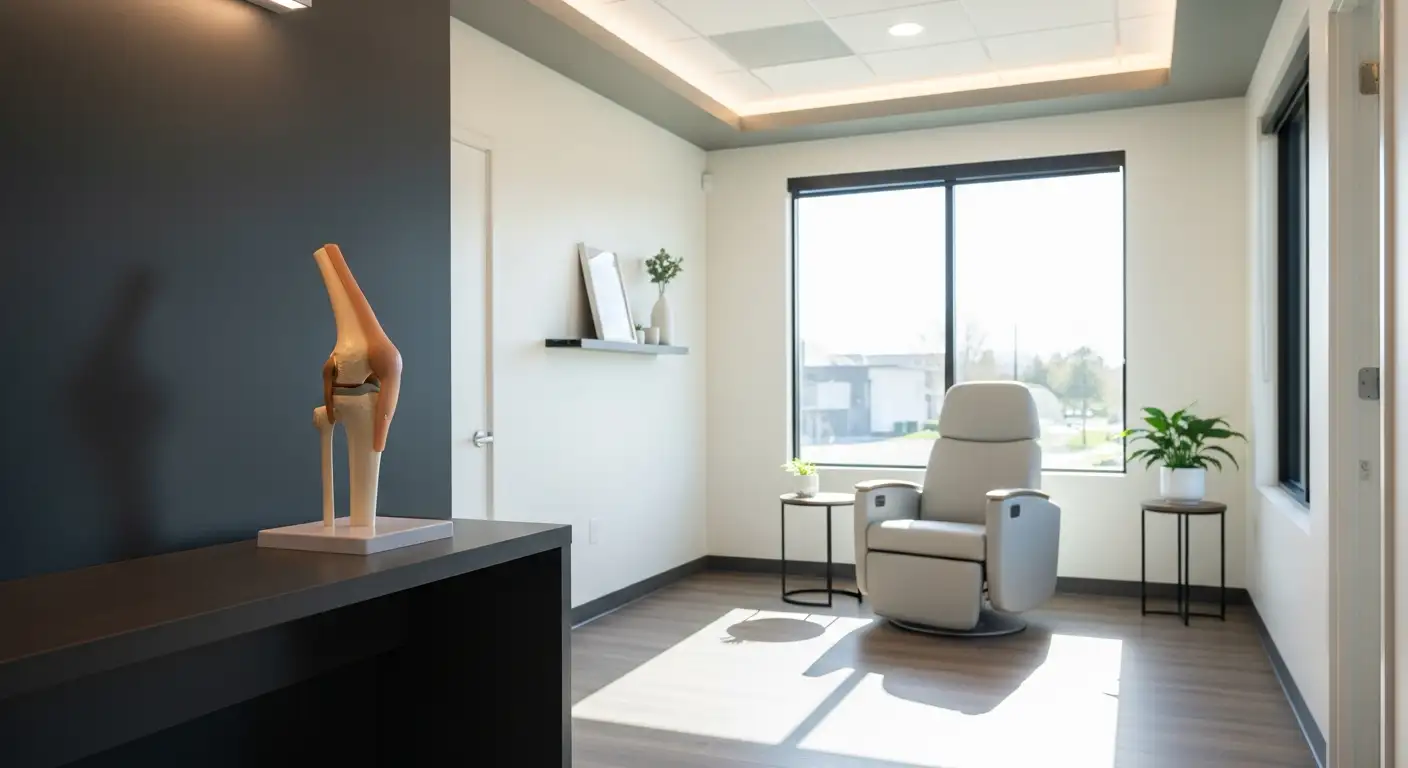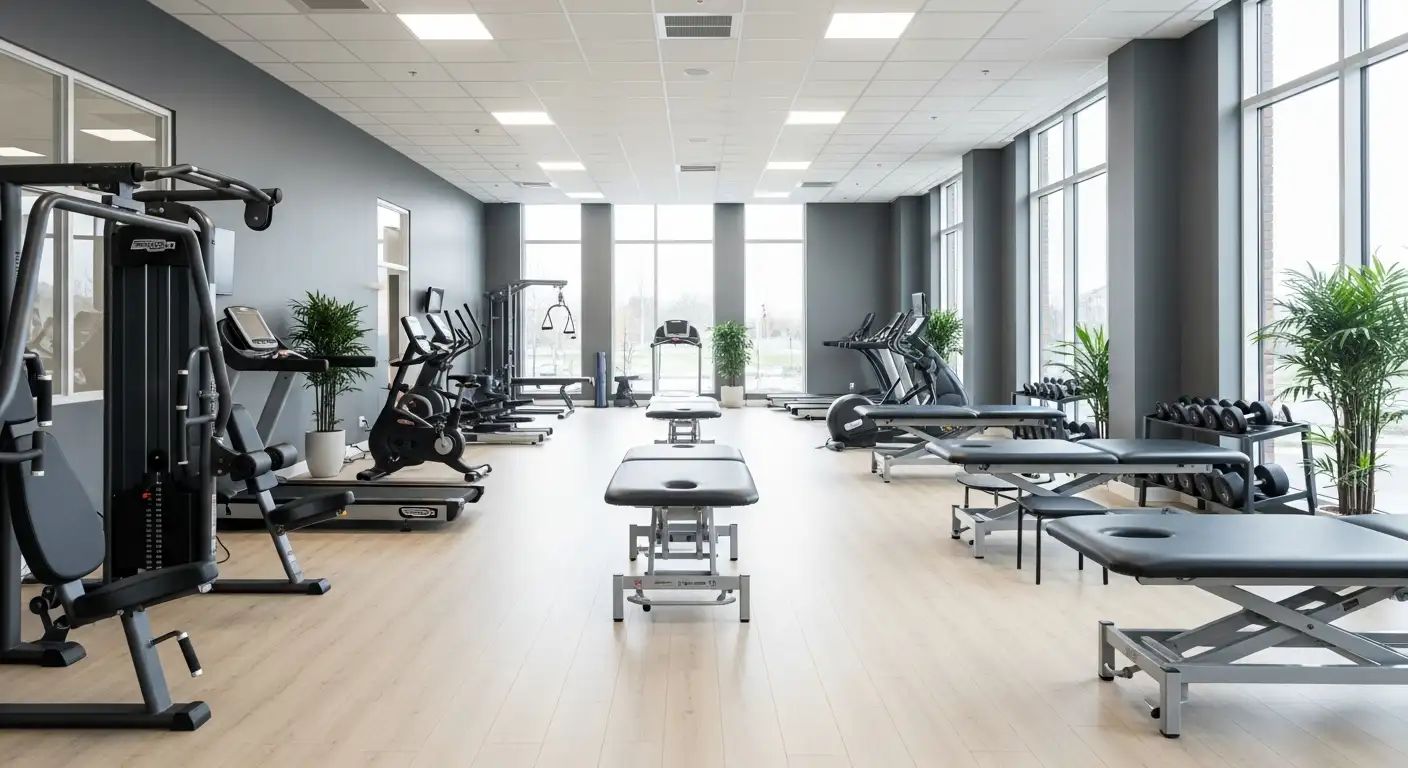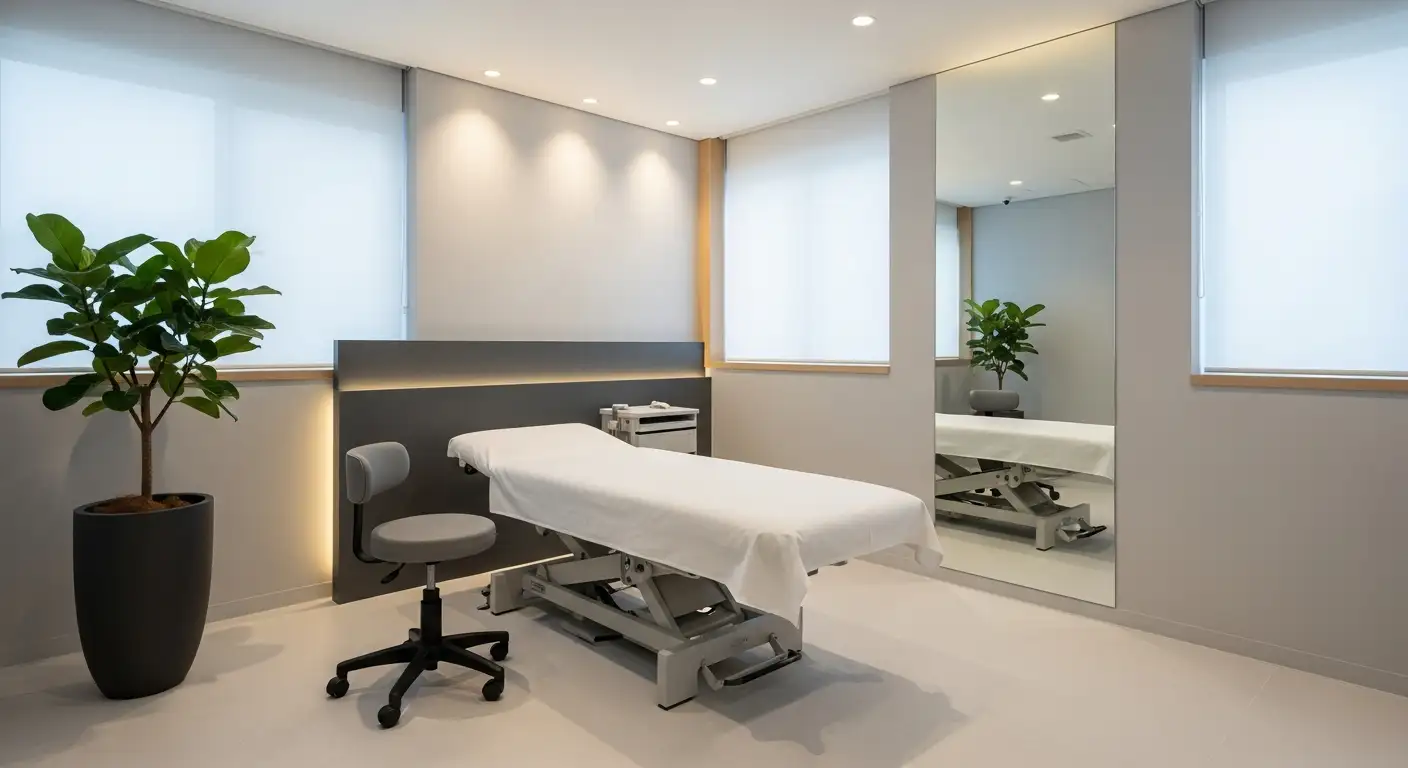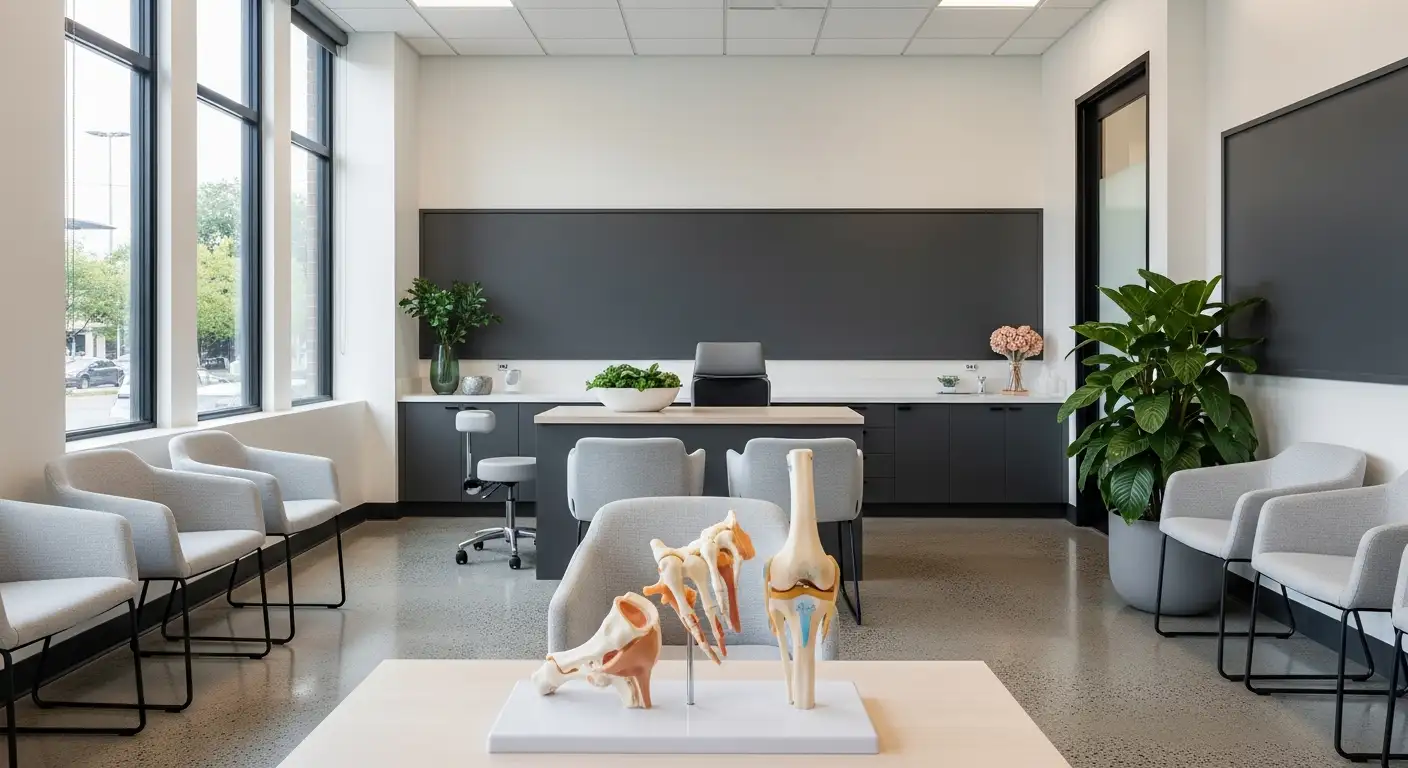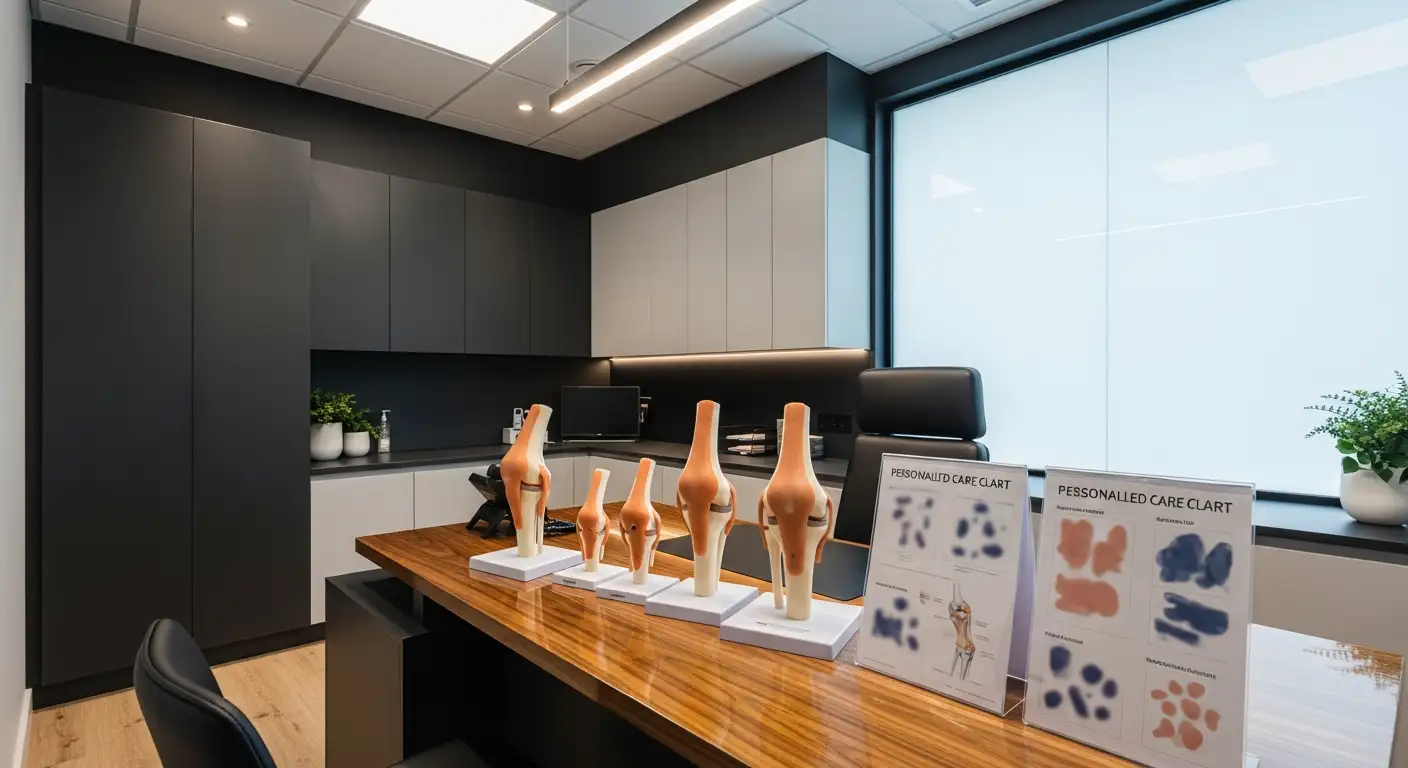Understanding Velcro Knee Braces: An Essential Support Tool
Velcro knee braces are widely recognized for their adjustable support, ease of use, and effectiveness in managing various knee conditions. Whether for injury recovery, arthritis relief, or sports performance, these braces offer customizable options suitable for a broad spectrum of users. This article explores the features, benefits, and considerations when choosing a Velcro knee brace to ensure optimal knee health and support.
Features and Types of Velcro Knee Braces
What are the main features, types, and benefits of Velcro knee braces?
Velcro knee braces are versatile orthopedic tools designed to offer support, stability, and pain relief for a wide range of knee conditions. These supports are equipped with adjustable Velcro straps that allow for a customized fit, making them easy to wear during daily activities, sports, or rehabilitation. The adjustable nature ensures that the brace stays snug without restricting blood flow or causing discomfort.
There are several types of Velcro knee supports tailored to specific needs. Each type targets particular issues, providing effective solutions for various knee problems.
Different types of Velcro knee supports
| Type of Knee Brace | Main Function | Ideal Use Cases | Specific Features |
|---|---|---|---|
| Sleeve Supports | Compression and mild stabilization | Osteoarthritis, general soreness | Made of elastic or neoprene, offers uniform support |
| Hinge Braces | Additional joint stability | Ligament injuries, post-surgery recovery | Incorporate metal or plastic hinges with adjustable straps |
| Unloader Braces | Reduce pressure on affected compartments | Knee osteoarthritis, joint misalignment | Designed to shift weight away from painful areas |
| Patellofemoral Supports | Stabilize kneecap movement | Patellar tracking issues | Focus on support around the kneecap with straps |
| Immobilizers | Complete joint immobilization | Severe injury, post-op immobilization | Rigid structure with straps for strict stabilization |
Materials used in Velcro knee braces
Velcro knee supports are typically made from a combination of durable materials that optimize support and comfort. Common materials include:
- Neoprene: Offers compression, warmth, and elasticity, beneficial for soothing pain.
- Nylon and Polyester: Provide robustness and moisture-wicking properties.
- Plastic and Metal Hinges: Add stability and control movement, especially in hinged braces.
- Velcro Straps: Allow for easy adjustability and a secure fit.
These materials are chosen for their durability, flexibility, and skin-friendliness, ensuring the supports can withstand daily wear while providing effective support.
Benefits of Velcro knee braces
The primary advantages of Velcro knee braces include the ability to adjust the tightness for comfort and stability, ease of use, and the potential to reduce pain and swelling. They help improve joint confidence, support healing from injuries, and can prevent further damage.
From mild instability to severe ligament or meniscus injuries, Velcro braces can be adapted for various needs. For individuals managing osteoarthritis, such orthopedic supports can help increase walking distances, reduce stiffness, and improve mobility.
Overall, the combination of adjustable straps, supportive materials, and specialized designs makes Velcro knee braces highly beneficial for daily pain management, injury recovery, and ongoing joint support.
The Advantages of Velcro Closures Over Other Supports
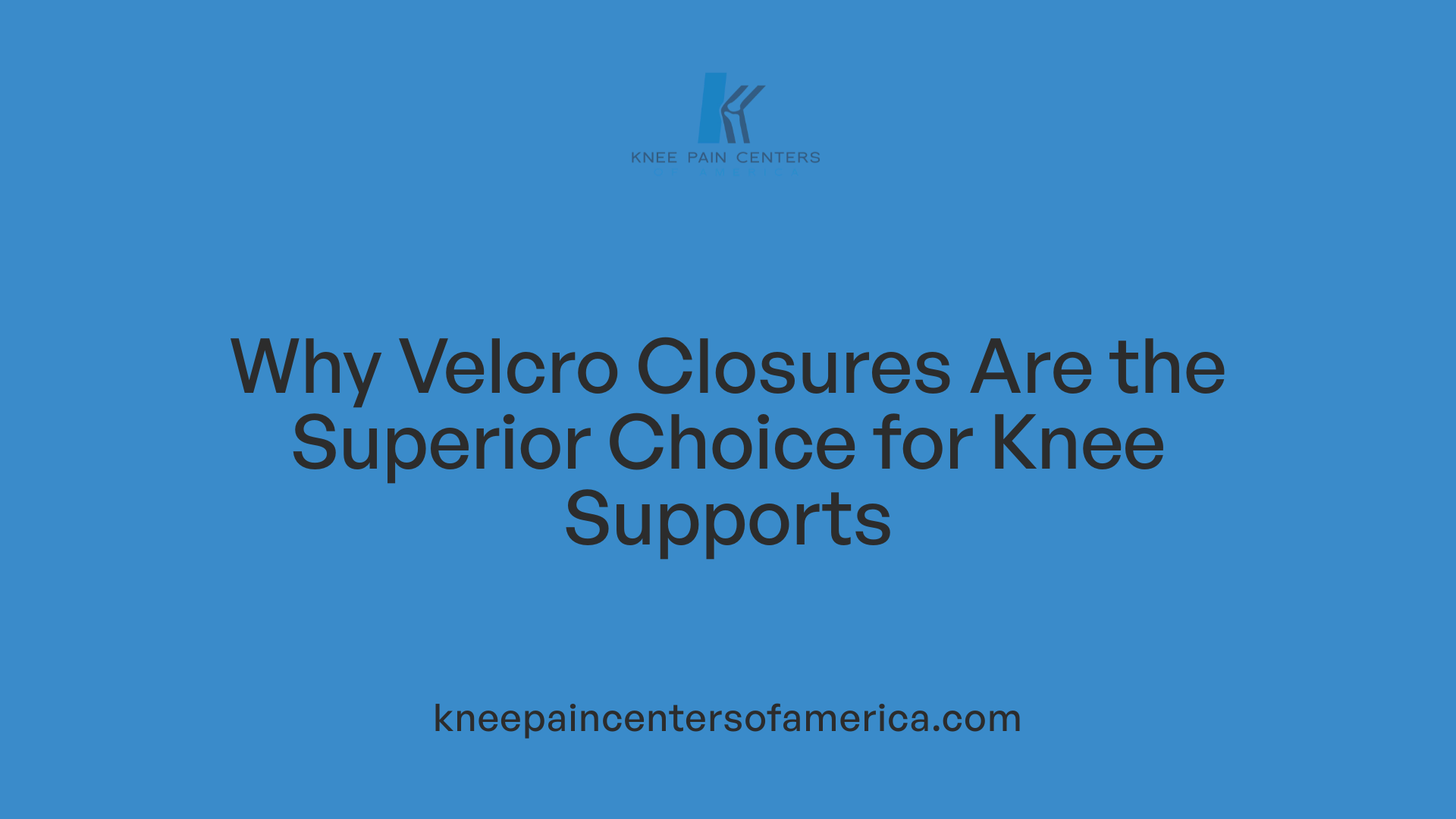
How do Velcro closure knee supports compare to other support options?
Velcro closure knee supports stand out for their adjustability and ease of use. Unlike slip-on or pull-on supports, which require severe stretching or complicated fastening, Velcro straps allow users to tailor the tightness and compression to their comfort level easily.
This adjustability ensures a secure fit, which is crucial for stability during activities or recovery. For those with limited dexterity or discomfort from fiddling with multiple straps, Velcro closures are particularly beneficial. They can be quickly fastened and unfastened, making them a practical choice for everyday wear or during physical activity.
Compared to rigid supports made of stiff plastic or metal without adjustable features, Velcro-supported braces offer a customizable fit that can adapt as swelling decreases or as comfort needs change. This flexibility enhances user confidence and ensures continued support.
However, Velcro straps have their downsides. Over time, the fastening strips can wear out, become less sticky, or collect dirt and debris. This accumulation can reduce their grip strength or cause discomfort. Proper maintenance, such as cleaning the hooks and loops regularly, can extend their lifespan.
In summary, Velcro closure knee supports provide an excellent combination of adjustability, convenience, and secure fitting, making them a popular choice among various knee support options. Their ease of application combined with effective stabilization helps many users manage knee pain and improve mobility.
Selecting the Right Knee Brace for Your Needs
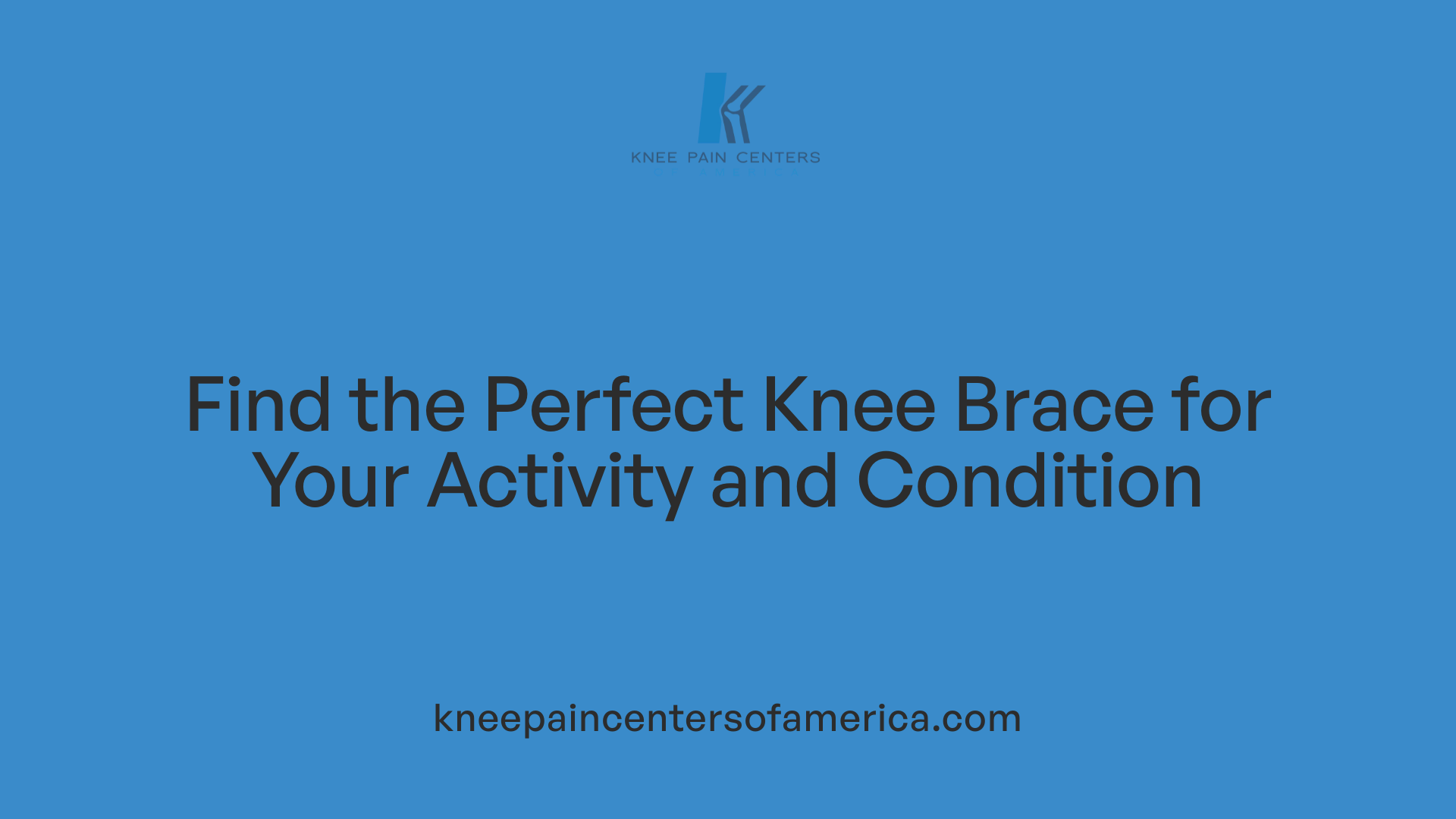
What should I consider when selecting a knee brace for medical or sports use?
Choosing the appropriate knee brace depends heavily on your specific needs, whether for medical recovery or athletic performance. It is always advisable to consult with a healthcare professional to identify the right type based on your injury or condition, such as ligament tears, osteoarthritis, or patellofemoral issues.
Support levels vary between braces. For example, severe ligament injuries might require a rigid, custom-fitted brace, while mild instability or arthritis might be managed well with less restrictive options like unloader knee braces or knee sleeves.
Material and comfort are also critical factors. Most braces are made of stiff plastic or metal, often combined with cushions and straps for a secure fit. These materials should be durable yet comfortable, with breathable fabrics to prevent skin irritation.
Proper sizing is essential for optimal support. A brace that is too tight may restrict blood flow and cause discomfort, while a loose fit reduces effectiveness. For hinge braces or post-operative supports, proper alignment and fit are especially important to ensure that the brace functions correctly.
Different braces serve various functions:
- Unloader knee braces help absorb weight and relieve pressure, greatly benefiting those with arthritis.
- Functional braces support ligament injuries.
- Prophylactic braces aim to prevent injuries in athletes.
Considering your activity level is also important. Athletes engaging in sports might prefer specialized options like the Bauerfeind Sports Knee Support, which offers targeted compression and stability suitable for high-performance needs. On the other hand, for daily actions like walking or hiking, outdoor knee supports with features like the Omega Pad and Downhill Relief System can provide comfort and protection.
Always adhere to medical advice regarding when and how to wear a knee brace. Properly fitted and used braces can alleviate pain, support healing, and let you perform activities with greater confidence. Regular cleaning and monitoring for skin irritation or pressure sores contribute to safe and effective use.
In summary, selecting a knee brace involves assessing your medical condition, activity level, and comfort preferences. In some cases, a brace will be recommended by your doctor, who may also suggest whether a custom-fitted or over-the-counter model is best.
| Type of Use | Recommended Braces | Features | Suitability |
|---|---|---|---|
| Medical recovery | Post-operative braces, GenuTrain series | Adjustable, stabilizing, tailored support | Injury rehab, recovery periods |
| Sports or active lifestyle | Bauerfeind Sports Knee Support, Outdoor Knee Support | Compression, stability, specific features for movement | Athletic activities, hiking |
| Arthritis or mild instability | GenuTrain A3, unloader braces | Pain relief, unloading pressure, improving mobility | Osteoarthritis, degenerative conditions |
Effectiveness and Benefits of Velcro Closure Mechanisms
How effective and advantageous are Velcro closure mechanisms in knee supports?
Velcro closure mechanisms are widely used in knee braces due to their numerous benefits. They provide a secure fastening that keeps the brace in place, which is essential for optimal support and stability. The adjustability offered by Velcro straps allows users to customize the fit to their individual needs, ensuring the brace is snug but not too tight. This adjustability is especially important for people with swelling or varying levels of joint discomfort.
In terms of knee stability and pain relief, Velcro closures help maintain proper positioning of the knee brace, which can help distribute pressure evenly across the joint. This can significantly reduce pain and stiffness, particularly in cases of knee arthritis. By supporting proper alignment, they also aid in preventing excessive movement that might aggravate injuries or degenerative conditions.
The ease of use associated with Velcro straps is another advantage. They can be quickly fastened or loosened, making the process accessible even for those with limited dexterity or strength. This feature encourages consistent use, which is vital for the therapeutic benefits of knee support.
Long-term considerations include the durability of Velcro straps, which typically hold up well with proper care. Over time, however, Velcro may lose some of its sticking capability if it accumulates lint or debris, requiring occasional cleaning or replacement. It's also important not to overtighten straps, as this can restrict blood flow or cause skin irritation.
Overall, Velcro closure mechanisms in knee supports enhance both the comfort and effectiveness of the devices. They facilitate a secure fit, improve joint stabilization, and make the support process straightforward for everyday use. While they do not directly alter the biomechanics of muscles or tendons like some orthotics might, their role in optimizing brace fit and function makes them a valuable feature in knee support design.
Purchasing Considerations for Velcro Knee Braces
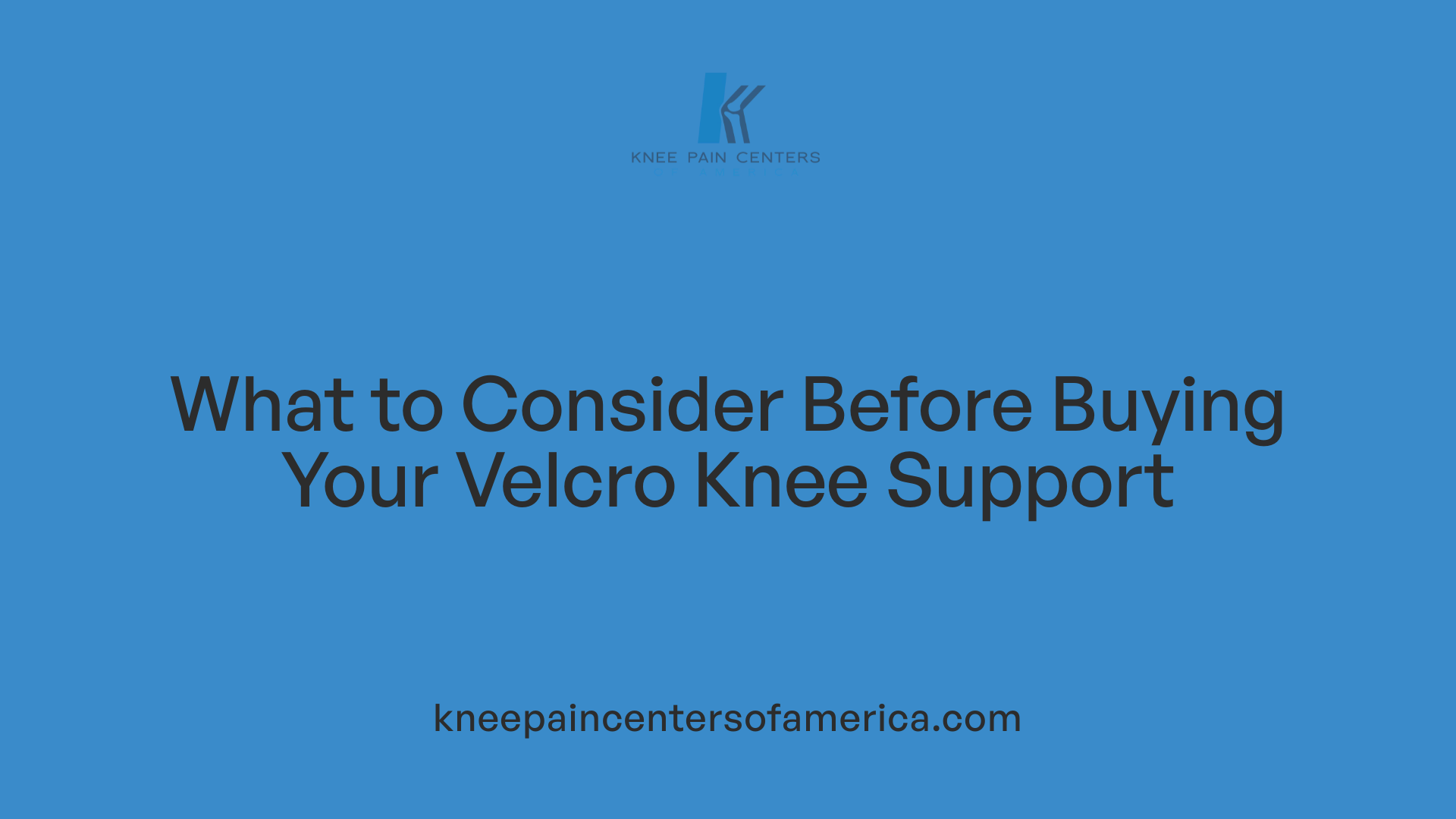 When looking to buy Velcro knee braces, it's important to assess several factors to ensure you select the right product for your needs. First, identify the specific type of brace that will support your knee condition most effectively. For example, an unloader brace helps in reducing pressure from arthritis, while a patellofemoral brace may be better for kneecap issues, and a functional brace offers stability after injury.
When looking to buy Velcro knee braces, it's important to assess several factors to ensure you select the right product for your needs. First, identify the specific type of brace that will support your knee condition most effectively. For example, an unloader brace helps in reducing pressure from arthritis, while a patellofemoral brace may be better for kneecap issues, and a functional brace offers stability after injury.
High-quality materials are vital for durability and comfort. Stiff plastics and metals provide stability, while cushions and straps made of soft, adjustable materials like Velcro help secure the brace snugly around your knee without causing discomfort. Proper fit and adjustability are key to effective support; the brace should feel secure but not restrictive.
Price ranges vary significantly based on features and brand reputation. Budget options are available, but investing in well-known brands ensures better quality and safety. Reputable brands such as GenuTrain, Bauerfeind, and others often offer different models tailored for specific conditions, from mild instability to severe ligament injuries.
Availability is another factor to consider. Many knee supports can be purchased over-the-counter at pharmacies, sporting goods stores, or online platforms. Always check that the product meets safety standards and has undergone relevant testing. It’s advisable to read reviews and consult healthcare professionals or specialists to confirm suitability.
A few considerations when choosing a brace include:
| Feature | What to Look For | Additional Notes |
|---|---|---|
| Material | Durable plastic or metal, breathable cushions | Ensures longevity and comfort |
| Straps and Fasteners | Adjustable Velcro straps | Allows for a customizable fit |
| Size and Fit | Proper measurement needed | Snug but not too tight, to avoid discomfort |
| Safety Standards | Meets regional safety certifications | Ensures product reliability and safety |
Always seek advice from a healthcare provider for ongoing knee problems, especially if you plan to wear the brace regularly. Proper fitting and appropriate selection can maximize relief from pain and support your activities effectively.
Additional Features and Innovations in Velcro Knee Supports
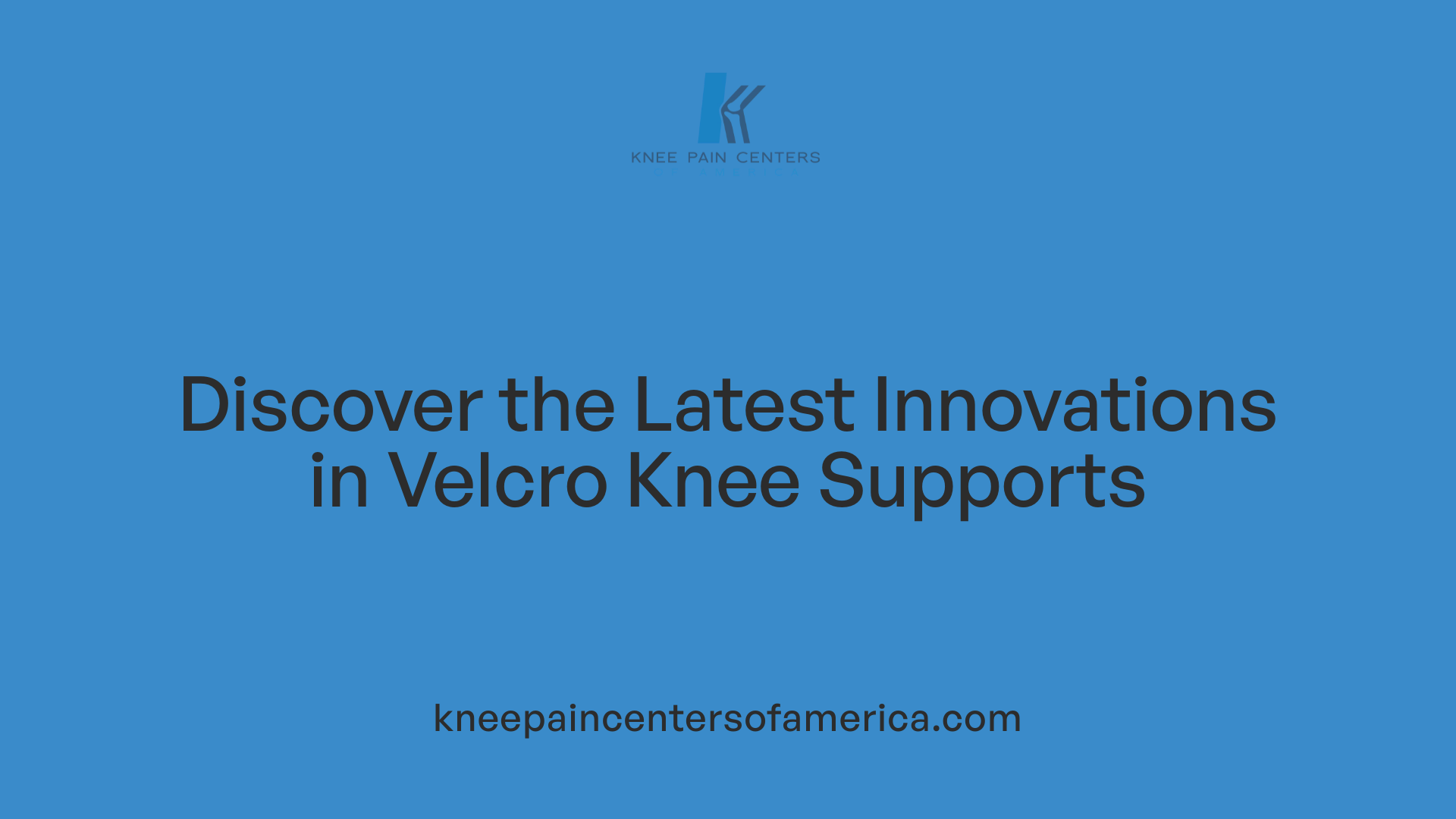
What recent innovations or additional features have been introduced in Velcro knee supports?
Velcro knee supports have seen notable advancements aimed at improving stability, comfort, and functionality. One significant innovation is the integration of advanced stabilization mechanisms, such as built-in hinges. These hinges allow for controlled, guided movement of the knee joint, providing extra support for ligament injuries, instability, or degenerative conditions.
Comfort adjustments have also evolved. Many newer models now incorporate breathable, moisture-wicking materials that keep the skin dry and comfortable during activity. Ergonomically designed straps ensure a snug but comfortable fit, reducing pressure points and enhancing overall user experience.
Beyond traditional support, smart features are beginning to appear. Some Velcro knee supports now include embedded sensors that monitor knee strain or activity levels. These smart supports can relay data to smartphones or medical devices, offering real-time feedback and aiding in injury management or rehabilitation plans.
While these innovations are promising, they are not yet widely available across the market. Most users will find modern Velcro supports with improved materials and design features highly beneficial, especially during prolonged use or intense physical activity.
Collectively, these advancements aim to make knee supports more effective, comfortable, and adaptable to various medical needs and active lifestyles.
Common User Errors and How to Avoid Them
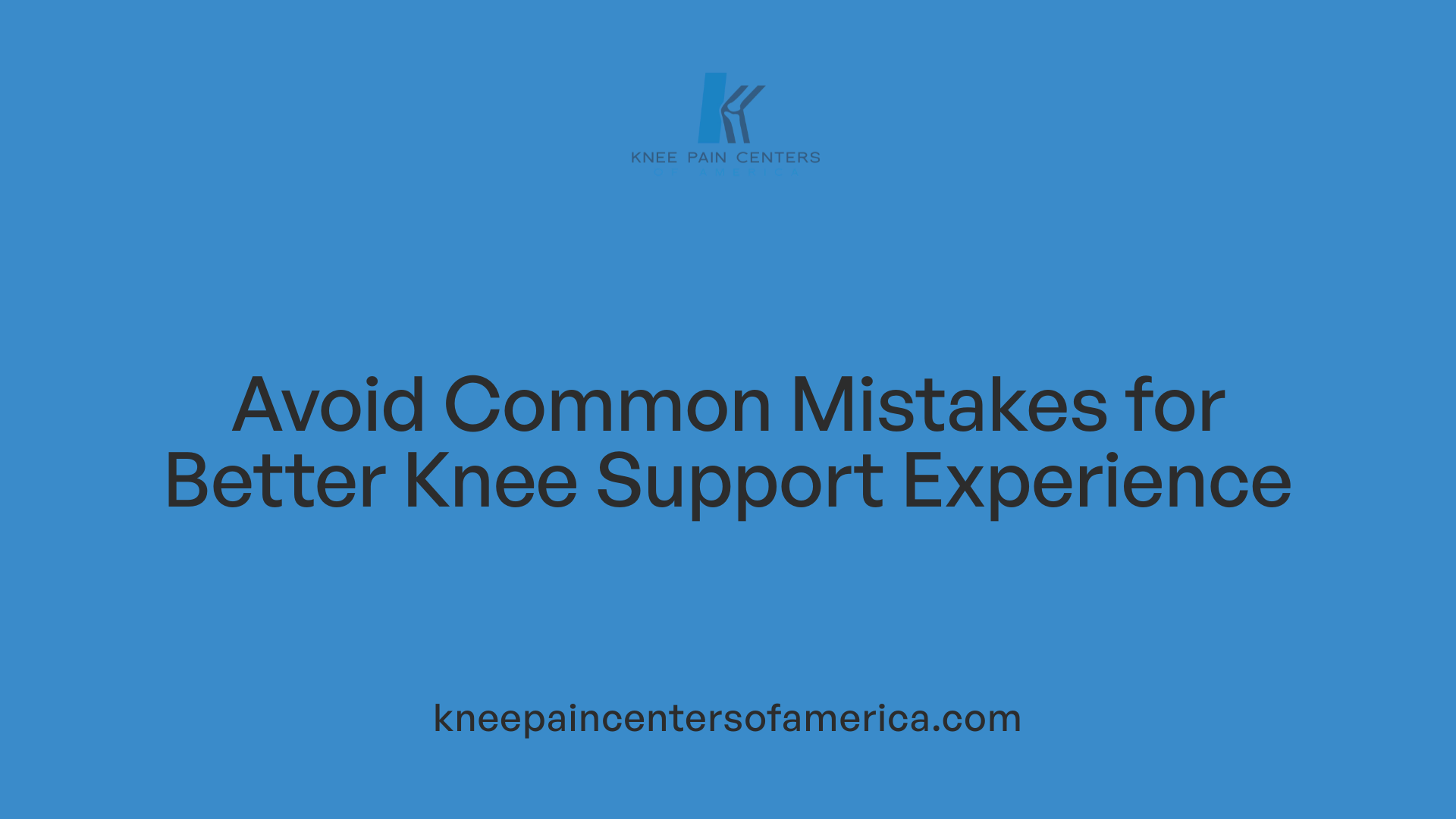
What are common mistakes when using Velcro knee supports and how can I prevent them?
Many users of knee braces, especially those with Velcro straps, make mistakes that can impact the effectiveness of the support and their comfort.
One frequent error is choosing the wrong size or not fitting the brace properly. A brace that is too loose won’t provide adequate support, while one that is too tight can cause discomfort or restrict blood flow. It’s important to carefully follow the manufacturer’s sizing guidelines to ensure proper fit.
Another common mistake is over-tightening or under-tightening the straps. Over-tightening can lead to skin irritation, pressure sores, and nerve compression, whereas under-tightening might fail to stabilize the knee effectively. Straps should be snug but not restrictive. Adjust them during wear to maintain optimal support and comfort.
Poor maintenance of Velcro straps can also diminish their effectiveness over time. Debris like lint, dust, or hair can adhere to the Velcro, reducing its ability to stick securely. Regularly cleaning the Velcro with a brush or by peeling apart to remove debris helps restore its sticking strength.
Additionally, some users neglect to periodically check the fit and condition of their braces. As swelling subsides or conditions change, a brace may need readjustment or re-fitting. Ensuring the brace remains in good condition and correctly fitted can prevent problems and improve the overall support.
To maximize benefits and minimize risks, users should always follow instructions for proper use and maintenance. Regular inspection, timely adjustments, and clean Velcro ensure that the knee support functions correctly, providing safe and effective stabilization.
Maintaining awareness of these common errors and their solutions can significantly enhance comfort, safety, and the therapeutic effects of Velcro-supported knee braces.
Ensuring Optimal Support and Care
Velcro knee supports are versatile, adjustable, and effective tools for managing knee health. Their ease of use and customizable fit make them suitable for a range of medical and athletic needs. By understanding the features, proper selection, and maintenance tips, users can maximize the benefits of these supports, enhancing stability, reducing pain, and promoting recovery. Always consult healthcare professionals for personalized advice and ensure that your support gear meets safety and quality standards for the best outcomes.
References
- Knee Braces, Sleeves & Support: Types & How To Use
- Knee Braces, Straps & Compression Sleeves
- Knee Braces, Sleeves & Support: Types & How To Use
- 7 Best Knee Braces of 2025, Tested & Reviewed
- Knee Braces, Sleeves & Support: Types & How To Use
- Best Knee Braces: The Ultimate Guide To Choosing The ...
- Dos and Don'ts: Knee Braces, Slings, and Boots
